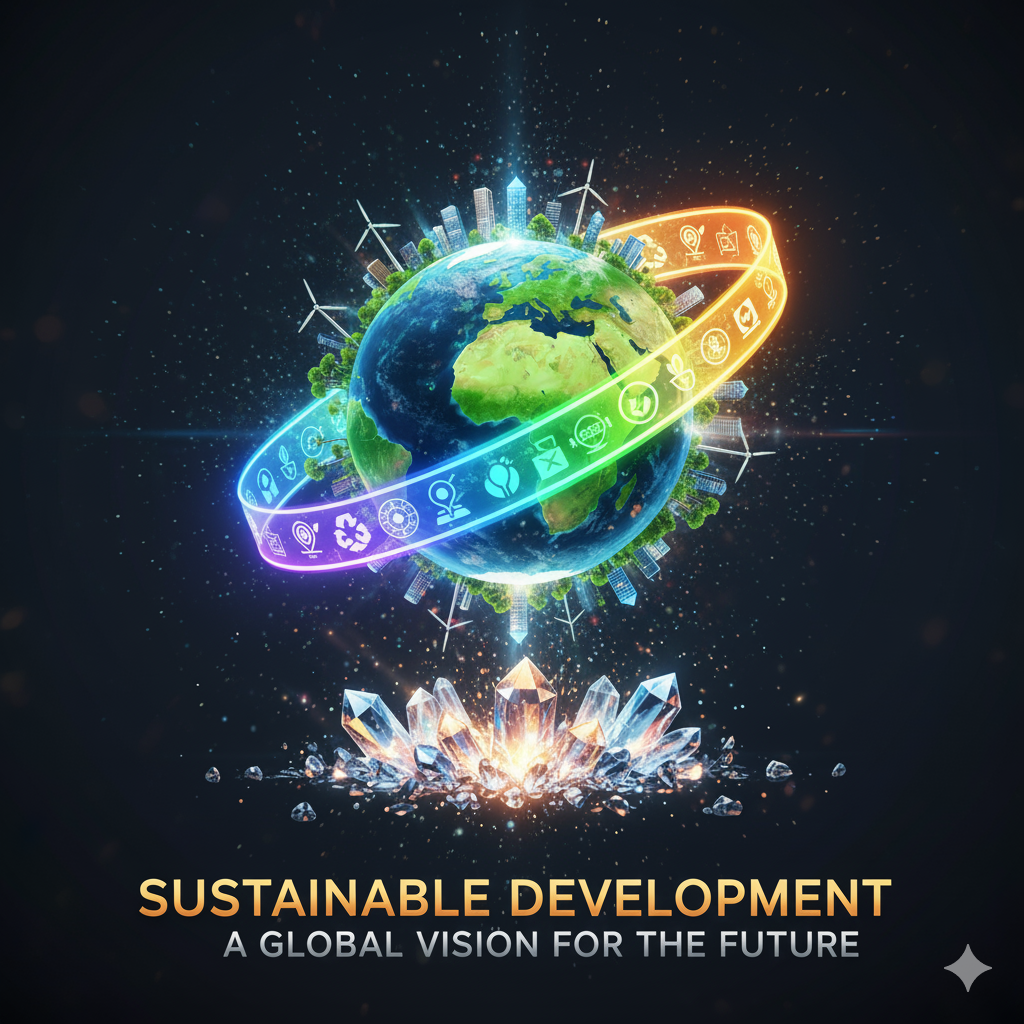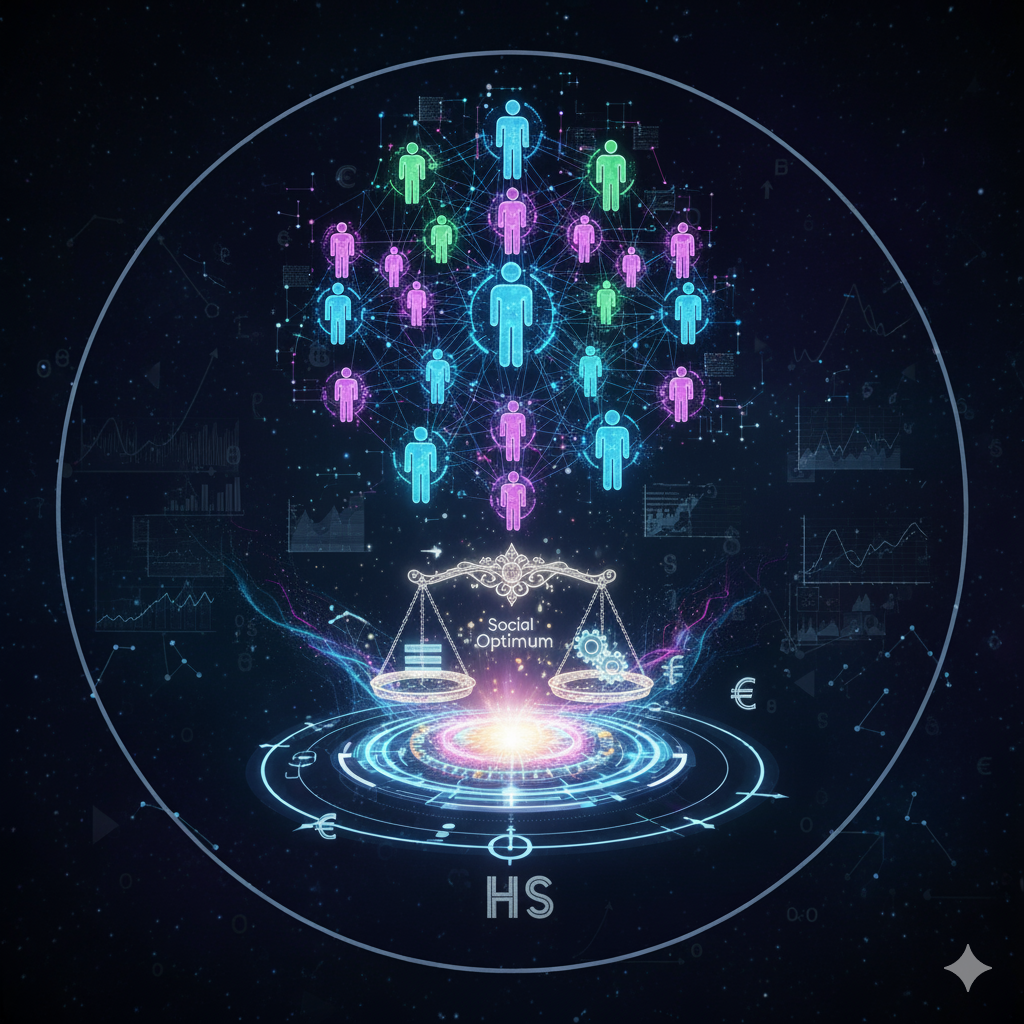Introduction
Sustainable development has emerged as one of the most crucial objectives of modern governance, especially in the 21st century when nations are facing the dual challenge of economic growth and environmental protection. For India, a country with a population exceeding 1.4 billion, diverse ecosystems, and rapid urbanization, the pursuit of sustainable development is not merely a policy choice—it is an existential necessity.
The India Report on Sustainable Development emphasizes that growth cannot be measured solely through GDP or industrial expansion but must also include ecological stability, social equity, and long-term resource conservation. India’s commitment to the United Nations Sustainable Development Goals (SDGs) and its own developmental priorities under NITI Aayog’s SDG India Index reflect this national vision.
This article explores the need for sustainable development as per the India Report, analyzing its background, objectives, and implications for India’s economic, social, and environmental future.
🌍 Understanding Sustainable Development
1. Definition and Concept
The concept of sustainable development was popularized by the Brundtland Commission Report (1987), which defined it as:
“Development that meets the needs of the present without compromising the ability of future generations to meet their own needs.”
It rests on three interlinked pillars:
- Economic Sustainability: Ensuring steady growth and livelihood opportunities.
- Social Sustainability: Promoting equity, inclusion, and justice.
- Environmental Sustainability: Protecting ecosystems and managing natural resources responsibly.
In the Indian context, sustainable development involves balancing economic progress with ecological security and social welfare—ensuring that growth reaches all sections of society while preserving the planet for future generations.
📊 India’s Approach to Sustainable Development
1. National Strategy and Institutions
India’s commitment to sustainability is guided by multiple frameworks and institutions:
- NITI Aayog: Serves as the nodal agency for coordinating the Sustainable Development Goals (SDGs) at the national level.
- SDG India Index: Tracks the performance of states and Union Territories across 17 SDGs and 169 targets.
- National Environment Policy (2006): Lays the foundation for integrating environmental considerations in economic planning.
- National Action Plan on Climate Change (NAPCC): Launched in 2008 to address climate challenges through eight missions, including renewable energy, sustainable agriculture, and water conservation.
Through these mechanisms, India seeks to achieve inclusive growth that aligns with global sustainability goals.
🌱 Need for Sustainable Development in India: Key Dimensions
The India Report on Sustainable Development outlines several areas where the need for sustainability is most urgent. These include environmental protection, economic resilience, social justice, and institutional reform.
1. Environmental Challenges and Resource Depletion
India’s rapid industrialization and urbanization have placed enormous pressure on its natural ecosystems.
a. Depleting Natural Resources
- Overexploitation of groundwater, deforestation, and mining threaten long-term resource availability.
- India is among the world’s most water-stressed countries, with the NITI Aayog’s Composite Water Management Index (2019) warning of severe scarcity in major cities by 2030.
b. Climate Change Impact
- India faces increasing frequency of floods, droughts, and cyclones.
- Himalayan glaciers are retreating, threatening water security for millions.
c. Pollution Crisis
- According to WHO data, 14 of the 20 most polluted cities in the world are in India.
- Air, water, and soil pollution cause health and economic losses.
These issues underscore the urgent need for sustainable consumption and production patterns, as emphasized in SDG 12.
2. Economic Growth vs. Environmental Stability
a. Traditional Growth Model
For decades, India followed a GDP-driven model focused on industrial expansion and infrastructure development. However, this model often neglected ecological costs such as deforestation, biodiversity loss, and carbon emissions.
b. Green Growth Approach
The India Report emphasizes a shift toward green growth, where economic progress is achieved alongside environmental protection.
Examples include:
- Renewable Energy Expansion: India targets 500 GW of non-fossil fuel capacity by 2030.
- Circular Economy Initiatives: Promoting recycling, reuse, and waste-to-energy projects.
- Sustainable Agriculture: Encouraging organic farming and efficient water use.
Economic sustainability is vital because environmental degradation directly affects long-term productivity, agriculture, and public health.
3. Social Inequality and Inclusive Development
Sustainable development also addresses social sustainability, ensuring that growth benefits all sections of society.
a. Poverty and Livelihoods
- Despite economic progress, India still faces income inequality and rural distress.
- Sustainable development ensures access to education, healthcare, clean water, and housing—core to SDGs 1, 2, 3, and 6.
b. Gender Equality
- Women play a crucial role in environmental management, especially in agriculture and natural resource use.
- India’s SDG 5 initiatives focus on gender empowerment, equal wages, and participation in decision-making.
c. Urban Sustainability
- Urbanization has led to housing shortages, pollution, and waste management issues.
- Smart Cities Mission and AMRUT (Atal Mission for Rejuvenation and Urban Transformation) promote sustainable urban planning and green infrastructure.
4. Climate Action and Energy Security
India’s Nationally Determined Contributions (NDCs) under the Paris Agreement highlight the importance of sustainable energy and climate adaptation.
a. Renewable Energy Transition
- India is the world’s third-largest producer of renewable energy.
- Initiatives like the International Solar Alliance (ISA) promote solar energy globally.
b. Reducing Carbon Intensity
- India aims to reduce emissions intensity of GDP by 45% by 2030 compared to 2005 levels.
- Focus is on green hydrogen, electric mobility, and energy-efficient buildings.
c. Climate-Resilient Agriculture
- Programs like Pradhan Mantri Krishi Sinchayee Yojana (PMKSY) and National Mission on Sustainable Agriculture (NMSA) promote water-use efficiency and organic farming.
5. Biodiversity and Ecosystem Conservation
India is a mega-diverse country, home to nearly 8% of global biodiversity. However, habitat destruction and overexploitation pose serious threats.
a. Forest and Wildlife Protection
- National Biodiversity Act (2002) and Wildlife Protection Act (1972) safeguard ecosystems.
- India’s National Afforestation Programme aims to increase green cover to 33% of total land area.
b. Ecosystem Services
Healthy ecosystems provide essential services—pollination, carbon sequestration, soil fertility, and water purification—that sustain economic activity.
The India Report highlights that protecting biodiversity is essential not only for ecology but also for economic resilience and rural livelihoods.
6. Water and Food Security
India’s agriculture is heavily dependent on monsoon rainfall and groundwater. Unsustainable irrigation and excessive fertilizer use have degraded soil and water resources.
a. Sustainable Agriculture Practices
- Encouraging Integrated Farming Systems and Soil Health Cards.
- Promoting millets and drought-resistant crops for climate adaptation.
b. Water Management
- The Jal Jeevan Mission aims to provide safe drinking water to every rural household.
- Water conservation programs under Atal Bhujal Yojana and Namami Gange project focus on sustainable water use.
Food and water security are central to sustainable development, linking SDGs 2 and 6 directly to India’s long-term growth.
7. Urbanization and Sustainable Infrastructure
India’s urban population is expected to reach 600 million by 2036 (Census projection). This creates immense pressure on infrastructure, transport, and housing.
a. Sustainable Urban Planning
- Smart Cities Mission: Integrates digital infrastructure with green urban spaces.
- Swachh Bharat Mission: Focuses on sanitation and waste management.
- National Electric Mobility Mission Plan (NEMMP): Promotes electric vehicles to reduce pollution.
Urban sustainability is vital to achieving a balance between modernization and environmental preservation.
8. Governance and Institutional Reforms
Effective governance is key to implementing sustainable policies.
a. NITI Aayog’s Role
- Tracks state-level SDG progress through the SDG India Index.
- Encourages cooperative federalism—states are motivated to compete and cooperate in achieving sustainable goals.
b. Environmental Legislation
- Strengthening of the Environment (Protection) Act (1986), Air (Prevention and Control of Pollution) Act (1981), and Water (Prevention and Control of Pollution) Act (1974).
- National Green Tribunal (NGT) ensures judicial oversight on environmental issues.
c. Green Budgeting
- Integrating environmental goals into budgetary planning to ensure that public expenditure supports sustainability.
📘 India Report: Key Findings and Recommendations
The India Report on Sustainable Development (NITI Aayog, 2023) presents a comprehensive overview of India’s progress toward the UN Sustainable Development Goals (SDGs). It identifies areas of success and concern.
1. Key Achievements
- India has made remarkable progress in renewable energy, digital governance, and poverty reduction.
- Several states like Kerala, Tamil Nadu, and Himachal Pradesh rank high in the SDG India Index due to strong social indicators.
- Increased forest cover and renewable energy generation have improved India’s environmental performance.
2. Persistent Challenges
- Water scarcity, air pollution, and income inequality remain major obstacles.
- Waste management, especially plastic waste, needs stricter enforcement.
- Regional disparities continue to hinder balanced development.
3. Recommendations
- Accelerate transition toward low-carbon economy.
- Strengthen climate-resilient agriculture and water management.
- Invest in green technology and innovation.
- Ensure inclusive governance and community participation.
- Foster education and awareness for behavioral change.
🌏 Global Commitments and India’s Leadership Role
India plays a proactive role in global sustainability efforts.
1. Paris Agreement
- India’s NDCs aim to achieve net zero emissions by 2070.
- Expansion of renewable energy and afforestation are key strategies.
2. International Solar Alliance (ISA)
- Co-founded by India to promote solar energy adoption across tropical countries.
3. G20 Presidency 2023
- India highlighted the theme “One Earth, One Family, One Future,” emphasizing sustainable lifestyles and global cooperation.
Through these initiatives, India is positioning itself as a leader in sustainable growth and climate diplomacy.
🧭 Way Forward
To achieve sustainable development, India must adopt a holistic and integrated approach across economic, social, and environmental dimensions.
- Green Economic Transition: Invest in renewable energy, circular economy, and sustainable industries.
- Inclusive Social Policies: Strengthen healthcare, education, and gender equality.
- Environmental Protection: Enforce strict pollution controls and promote eco-restoration.
- Technological Innovation: Use digital tools for smart governance and resource efficiency.
- Public Participation: Empower local communities in environmental decision-making.
- Monitoring and Evaluation: Strengthen SDG data systems for better policy design.
Sustainability must be embedded into India’s planning, budgeting, and governance frameworks at every level.
🌿 Conclusion
The India Report on Sustainable Development highlights that sustainability is not an external agenda but a national necessity. For a nation as vast and diverse as India, ensuring economic growth, social justice, and environmental protection simultaneously is the only way to secure a resilient and prosperous future.
Sustainable development is not merely about protecting nature—it is about ensuring human survival, dignity, and equitable progress. It is about building a future where India’s rivers remain clean, its forests thrive, its air is breathable, and its people prosper.
India’s vision of “Sabka Saath, Sabka Vikas, Sabka Vishwas, and Sabka Prayas” perfectly aligns with the global philosophy of sustainable development—ensuring that no one is left behind in the journey toward a greener and fairer world.




